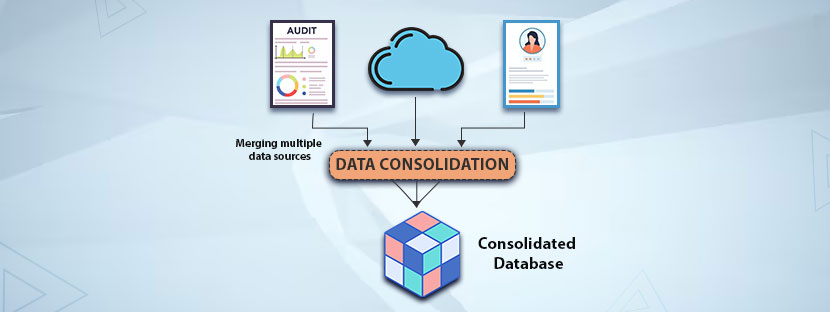Every day, a business collects enormous quantities of customer data. It collects the data from different sources and saves it in different locations. It’s a standard practice followed in small businesses. However, when it’s time to upgrade the business, customer data integration (CDI) becomes a necessity.
Having a consolidated database is the most essential thing that businesses are always looking for. Let this blog explain to you what CDI is, what its types and how they can benefit your business from different perspectives.
Let’s start with the concept first!
Concept of Customer Data Integration
Customer data integration simply means collecting customer data from various sources and organizing it into an integrated system. The main aim here is to create synergy with the customer data so that stakeholders (users of the customer data) like sales, marketing, management, and other teams can access the data.
An integrated system for customer data acts like a single source of truth where all your systems are connected. Departments that need customer data for various purposes can have direct access to the Customer Data Integration (CDI) system.
Sources of Customer Data Integration
✪ Email Data: Email open rates, CTR, engagement metrics, etc, are the key insights that help understand the customer preference and behavior.
✪ Website Interactions: To understand which things on the websites are attracting customers the most, the website interactions are tracked. These tracking measures include the number of website visits, the number of page views, the duration of each visit, etc.
✪ Page behavior: Interaction of the customers with each page and how they interact and take action are measured.
✪ Purchase time and details: To verify the effectiveness of the sales funnels, the time during purchase is tracked. Plus, it also measures pay-per-click purchase campaigns that drive sales.
✪ Downloads, usage, behavioral data: Download data showcases how many customers are actively engaged with the company. If it’s an app, then the usage of the app is also getting measured to understand the customer behavior on different measures.
✪ Push notification settings: Allowing push notifications shows data regarding customer preferences and helps prepare communication strategies.
All the above metrics are basically data regarding customers. With the development of CDI, all the customer data remained in the company’s integrated database. Therefore, the common users of the integrated database can access to use the data simultaneously for different business operations.
Interestingly, an integrated customer database provides a transparent look at the customers’ information. It builds the customer’s journey overall. Hence, your employees can get all the necessary information regarding any specific customers from one database. They don’t need to hop into different databases to find bits and pieces of customer information.
Types of Customer Data Integration
Integration of customer data is beneficial, and it’s being done with the help of a comprehensive measure. Primarily, there you’ll find three main types of CDI processes to organize and integrate the customer database. Each CDI has a distinct type of advantages as well as drawbacks. On top of that, the selection of the CDI type largely depends on the size and the specific needs of business models.
Let’s have a look at the different types of CDI here.
1. Consolidation
The consolidation model is one of the cleanest and easiest modes of preparing consolidated customer data. It’s basically a process where a company consolidates all its existing databases into one single large database (unified). This type of CDI benefits the business a lot as it enhances functionalities, standardizes data, and more importantly, it eliminates data silos.
For example, a multinational company might consolidate all its data generated across its regional offices and prepare a single set of unified databases. Therefore, all its business channels spread across the borders can use the integrated customer data conveniently. However, the cost of following this customer data integration type is quite high when the volume of data becomes huge.
2. Propagation
Compared to consolidation, propagation of customer data integration type is helpful for small and growing businesses. Particularly, startups that seek a model that could synchronize customer data from their email marketing software with the CRM.
The highlighted part of this model is that it does not integrate all collected data into a single source. Rather, this model is rightly suited to companies that have more than one data channel. Other than that, this CDI type works wonders with a small volume of data.
3. Federation
Federation is a type of CDI that comes into the picture only when the data consolidation becomes elaborately expensive. It’s a model that helps integrate the databases only upon getting a request. For example, a giant e-commerce platform that has a wide volume of customer data spread across a massive database might not want an integrated platform. However, the platform can make an organized database with some special type of customers on request.
The federation type of customer data integration works best when businesses are dealing with extremely large datasets.
Positives of Customer Data Integration
With an integrated customer database, companies can get two primary boosts. One, it increases operational efficiency as it makes the operations faster; and two, it enhances decision-making capabilities. CDI benefits the business in various ways. First and foremost, it eliminates data entry errors and minimize data silos. Well, there are more…
Let’s have a discussion about the advantages of consumer data integration in this blog.
★ Reduce data redundancies
Often, customer data recorded in different platforms creates issues of redundancy. In which the same data (customer data) appears multiple times in the database. Hence, companies approach the same customers multiple times and spend unconsciously. However, with the incorporation of CDI, all the customer data will appear in one place. Hence, it will be easy for you to track redundant entries and eliminate them.
★ Eliminate data silos
Sharing of information across departments is possible with the incorporation of customer data integration metrics. Thus, no department has to wait for another department to share its data with them. For example, your marketing team can access the sales log once the sales team closes the deals, so it can study which marketing strategy worked here. Integrated customer database provides a real-time access to the database, which eliminate data silos completely.
★ Simplify data management
An integrated database always helps data managers to extract data from it. It helps consolidate the database to extract different insights from it. For example, a customer who purchased an item can get some personalized offerings immediately thereafter. So it could encourage the customer to explore more products and ultimately, make a purchase.











